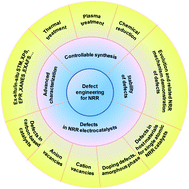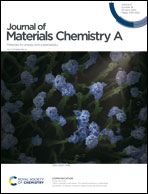Defect engineering of nanostructured electrocatalysts for enhancing nitrogen reduction
Abstract
The electrocatalytic nitrogen reduction reaction (e-NRR), an eco-friendly and economical approach to convert nitrogen to ammonia under mild conditions, has received widespread attention in recent years. Defect engineering has been illustrated to be an effective strategy to improve the catalytic activity and selectivity of electrocatalysts via changing the electronic states as well as creating additional active sites for reduction reactions. Thus far, various approaches have been adopted to tune the physical and chemical properties of catalyst materials by means of inducing defects of different types and varying their concentrations or locations in host materials. In this review, the mechanisms and design principles of defective electrocatalysts for the NRR are introduced, and the refined synthesis and characterization techniques of defect engineering are systematically summarized. Based on the recent advances in defect engineering of electrocatalysts for the NRR, the roles of various defect states, such as vacancies and the amorphous phase, in the catalytic enhancement mechanism are comprehensively discussed. Finally, perspectives on the challenges and opportunities in developing new cost-effective and high-efficiency NRR catalysts for practical applications are outlined.

- This article is part of the themed collections: Journal of Materials Chemistry A Recent Review Articles and Journal of Materials Chemistry A HOT Papers


 Please wait while we load your content...
Please wait while we load your content...